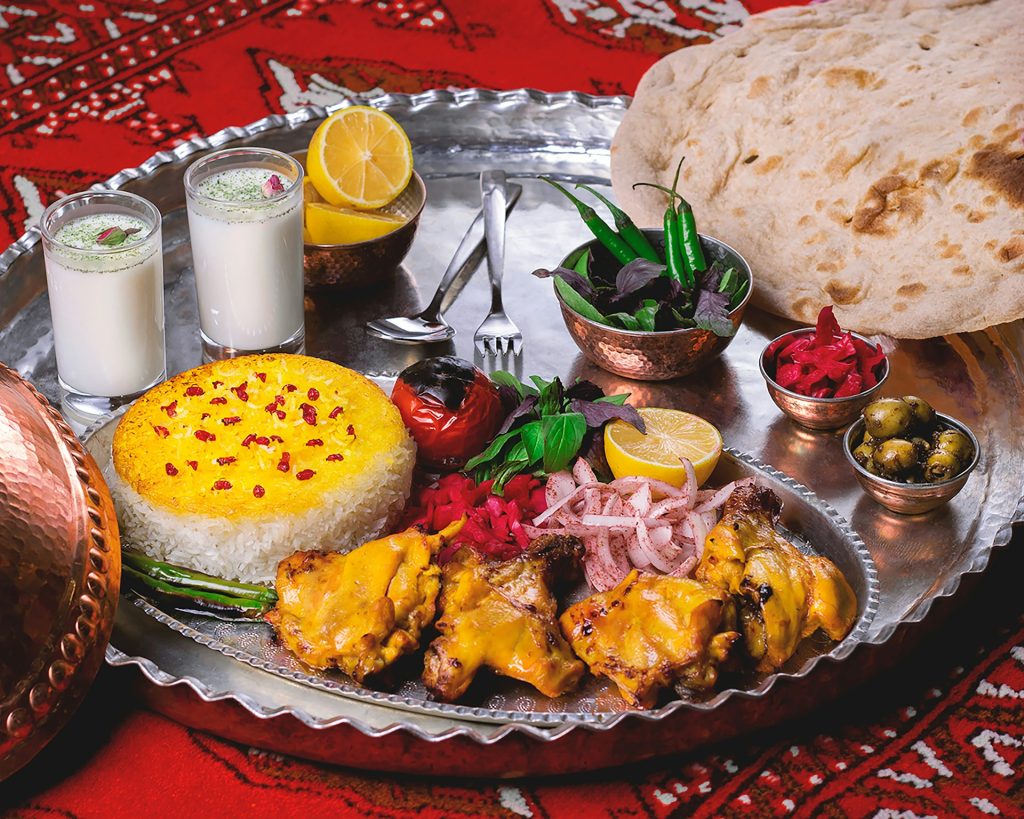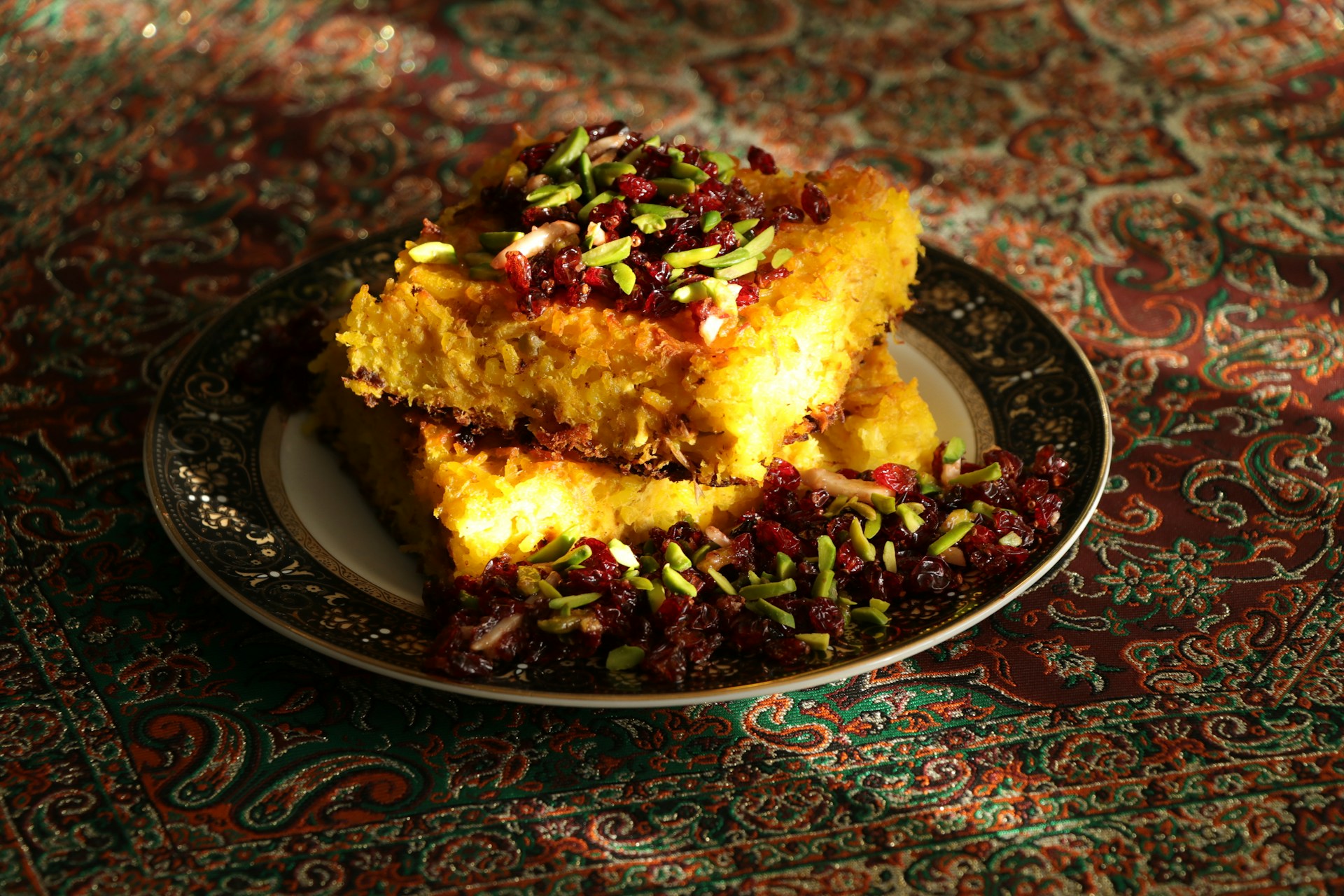Persian cuisine is a breathtaking symphony of flavors, colors, and aromas that have captivated food lovers for centuries. Rooted in ancient traditions and influenced by diverse cultures, Persian food is a beautiful balance of sweet, sour, and savory elements, offering dishes that are both nourishing and incredibly satisfying. Whether you’re drawn to saffron-infused rice, slow-cooked stews, or aromatic herbs, Persian cuisine promises an unforgettable culinary journey.
The Essence of Persian Cuisine
Persian food is defined by its bold yet balanced flavors, the use of fragrant spices, and its artistic presentation. Ingredients such as saffron, dried limes, pomegranate, and rosewater add complexity, while basmati rice, fresh herbs, and meats provide hearty sustenance.

Must-Try Persian Dishes
- Chelo Kebab – A national favorite! Juicy, marinated skewered meats served with saffron-infused rice, grilled tomatoes, and a side of butter.
- Fesenjan – A luxurious, slow-cooked stew made with pomegranate molasses, walnuts, and either chicken or duck, offering a perfect balance of sweet and tangy.
- Ghormeh Sabzi – A beloved herb stew with slow-cooked beef or lamb, kidney beans, and dried limes, creating a deep, earthy flavor.
- Tahdig – The golden, crispy layer of rice at the bottom of the pot that is highly coveted in Persian households.
- Zereshk Polo – A stunning dish of saffron-infused rice topped with tart barberries and slivered pistachios, often served with chicken.
- Ash Reshteh – A comforting, thick soup made with legumes, noodles, and fresh herbs, topped with kashk (fermented whey).
- Baghali Polo – A fragrant rice dish with dill and fava beans, usually served with lamb shank.
- Shirini – Persian desserts such as baklava, saffron ice cream, and rosewater-scented cookies bring a sweet and floral finish to any meal.
Health Benefits of Persian Cuisine
- Rich in Antioxidants – Saffron, pomegranate, and herbs provide numerous health benefits.
- Balanced and Wholesome – Persian meals often include lean proteins, fresh vegetables, and fiber-rich grains.
- Heart-Healthy Ingredients – Nuts, olive oil, and legumes are staples in Persian cooking.
- Fermented & Gut-Friendly Foods – Yogurt-based side dishes and kashk (whey) support digestive health.

How to Enjoy Persian Food
Persian meals are meant to be shared and savored, often served family-style with an abundance of side dishes, fresh herbs, and yogurt-based dips. Traditional Persian dining emphasizes hospitality, with generous servings and an inviting atmosphere that makes every meal a celebration.
Final Thoughts
Persian cuisine is more than just food—it’s a reflection of history, culture, and the Persian love for flavorful, nourishing, and beautifully presented meals. Whether you’re a seasoned foodie or trying Persian food for the first time, each dish tells a story of centuries-old traditions and culinary mastery.
Have you ever tried Persian food? What’s your favorite dish? Let us know in the comments!



